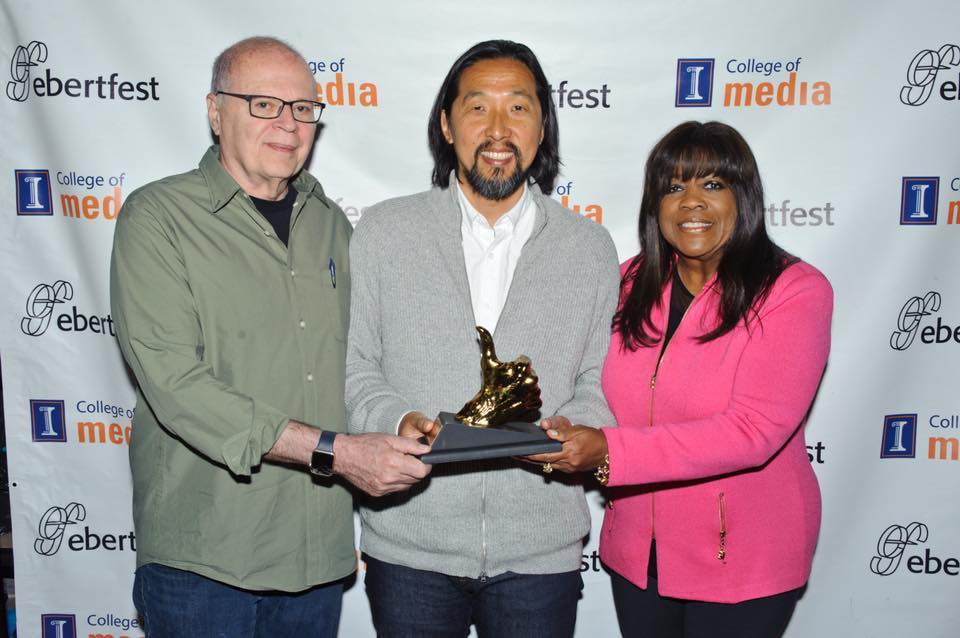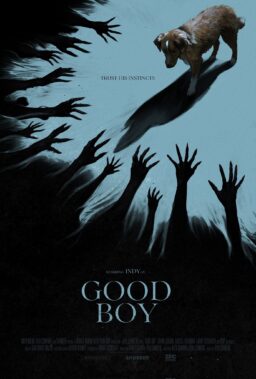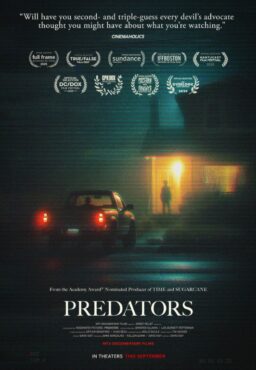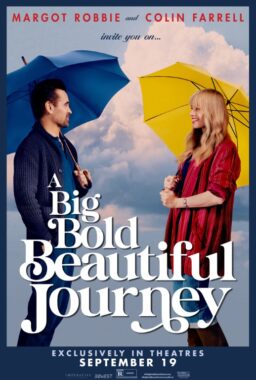The typical day at Ebertfest is one that sends attendees down any number of highways and byways, cinematic and otherwise, and provides them with an experience that exposes them to any number of experiences. This was especially true of Day 3 of this year’s Ebertfest, a journey that covered nearly a century of film, covering subjects running the gamut from architecture to avant-garde. It even included a street party with cake, ice cream, music and, perhaps inevitably, a couple of dancing dinosaurs. And as incongruous as these elements may sound listed in print, they all, with the possible exception of the dinosaurs, came together into one strange and beautiful whole.
The screening day kicked off with “Columbus,” the brilliant 2017 feature debut from writer/director Kogonada. Set in the city of Columbus, Indiana, a place considered the Midwest Mecca of Architecture for the number of modernists structures on display, the film stars John Cho as Jin, a Korean-born man who arrives in town to visit his seriously ill father in the hospital. While there he becomes acquainted with Casey (Haley Lu Richardson) a high school graduate who has been putting off going to college, at least in part so as to help take care of her mother, a recovering meth addict. An architecture fan herself, Casey takes Jin to look at her favorite buildings and as time goes on, a bond begins to develop between the two despite the age difference between them—both have, after all, been forced to deal with absent parents in the past and are having to come to terms with separating from them entirely.
From this description, you may think that you know how this scenario develops and you would probably be wrong. Written and directed with the kind of precision rarely found these days in most feature, let alone debuts, and beautifully acted by Cho, Richardson (whose turn was one of the best and most heartbreaking seen on a movie screen in 2017) and Parker Posey as an old friend of Jin’s as well as a student of his father, “Columbus” is one of those films that quietly grabs a hold of you and sticks around in the mind long after the end credits have stopped rolling.
After the screening, Kogonada was joined on stage by producers Andrew Milano and Danielle Behrens, executive producers Bill Harnisch and Ruth Ann Harnisch and RogerEbert.com writer Matt Fagerholm for a Q&A moderated by Nate Kohn. Kogonada, who got his start making video essays, discussed the key influence of legendary Japanese filmmaker Yasujiro Ozu on his work, especially in the way that he effectively utilizes empty space to underline the emotions of the characters throughout. (Although there are a number of shots in the film where nothing exactly happens from a narrative perspective, I cannot readily think of a single image on display that I would not consider to be absolutely essential.) Obviously, screenplays for projects that deal with subjects as arcane as film theory and architecture are not exactly the easiest of sell but, as Ruth Ann Harnisch put it, you “get into movies to make art.” Behrens also talked about how she needed to be sold on Richardson, who Kogonada had wanted to appear based on a hunch after meeting with her, and how Behrens managed to help get the film’s highly important sound mix done at the legendary Skywalker Ranch.
Next up was one of the longest-lasting and most beloved of all Ebertfest traditions, the annual appearance of the Alloy Orchestra, the three-man ensemble—Terry Donahue, Ken Winokur and Roger Miller—who compose scores for silent films that they then present live at screenings utilizing a wide array of instruments ranging from the familiar to the downright peculiar. Speaking of peculiar, their choice for a film this year was “A Page of Madness,” a 1926 work from Teinosuke Kinugasa that I would be willing to bet that virtually no one in the audience had even heard of, let alone seen, before it turned up in the program. Between its pronounced avant-garde trappings, the loss of what could be up to a quarter of the footage included in its original release and the lack of any intertitles to help clarify story points, the film is, especially for first-time viewers, perhaps the single most bewildering work that has ever played at Ebertfest. This is not a criticism, mind you, as much as it is an observation. Could I give you a summation of the narrative without looking it up somewhere for a refresher at this very moment? No, though I might say that if you tried watching “Shutter Island,” “The Cabinet of Dr. Caligari” and the last 20 minutes of “2001” at the exact same time, it might generate the same sensations this film does. However, what I can tell you is that the combination of the wild and hallucinatory visual style and the relentless driving contributions of the Alloy Orchestra (whose score is one of their very best) made for a truly unforgettable moviegoing experience.
What that something might be, of course, proved to be up for debate, not just among members of the audience but among the members of the discussion panel, consisting of film critic Nell Minow, Alloy members Miller and Donahue and moderator Richard Neupert. Although some portion of the talk was given to the historical significance of the film—as much of Japan’s film archives were leveled during Word War II, the fact that it exists at all, even in an incomplete and imperfect form, is some kind of miracle—much of the talk consisted of everyone trying to piece together exactly what they had just seen. At one point, Minow even brought out a description provided by members of the Shunkankakuha literary movement, who helped with an early version of the screenplay, and their explanation was so convoluted that she then explained “This is why we don’t let artists talk.”
Having just spent 73 minutes freaking out on industrial-strength art-house acid, the Ebertfest audience was brought back down to Earth with a genuine street party held right outside the Virginia Theater. Designed as a way to celebrate the fact that Ebertfest is now in its 20th year and to serve as a memorial to Ebert, the late festival guardian angel and travel coordinator Mary Frances Fagan and longtime volunteers Leonard Doyle and Sharen Slade. Live music was played, there was dancing for those so inclined as well as ice cream and cake for one and all. The breather served as a perfect way for viewers to sort of shake out the cobwebs, get some fresh air (thankfully, the weather actually cooperated for once) and get reenergized for the final movie on the day’s program. (That said, the dancing dinosaur on display are going to haunt me for a long time to come.)
The last film on the program was “American Splendor” and in many ways, it might have been the biggest surprise of the day’s offerings. It’s the meta-movie look at the life of Harvey Pekar, an ordinary schlub from Cleveland who became celebrated for turning his day to day miseries working a dead-end job as a file clerk into artistic gold into the cult comic book. When “American Splendor” came out in 2003, I liked it a lot but I don’t think I ever had a chance to revisit it until now. Watching it again, I found myself pretty much blown away by how great it was now revealing itself to be. For starters, the performances by Paul Giamatti as Pekar and Hope Davis as his wife, Joyce, are breathtaking in the ways that they invoke the real people they are playing with a startling degree of accuracy. Their accomplishments can be properly appreciated thanks to one of the most impressive stylistic gambits employed by co-directors Shari Springer Berman and Robert Pulcini, former documentarians making their narrative debuts—the decision to mix fact and fiction by bringing in the actual Harvey and Joyce appearing in stylized behind-the-scenes moments commenting on their lives and how they are being depicted. Hilarious, thought-provoking and even genuinely touching during the scenes in which Harvey finds himself facing testicular cancer.
Afterwards, Berman and Pulcini were joined on stage by producer Ted Hope, RogerEbert.com critic Nick Allen and moderator Leonard Maltin to talk about the story behind the movie, one that could itself make for a fascinating movie of its own. They were presented by Hope with a collection of “American Splendor” comics and a videotape featuring Pekar’s legendarily cantankerous appearances of “Late Night with David Letterman” in the ’80s when Pekar’s star was on the rise, and charged with somehow wrenching the material into a screenplay. (The first draft got the film greenlit, and the second was nominated for an Oscar.) They then had to get Pekar to approve them, which led to a memorable trip to Cleveland that found them staying in a hotel of his choosing, a place that was connected to a local hospital and which was the place where Cole Porter wrote “Night and Day.” During the audience portion of the discussion, critic Matt Zoller Seitz even went so far as to tell those gathered that when he originally reviewed the film back in 2003, he gave it only a middling review. After watching it again at the Virginia, he now felt it was a masterpiece and offered a public mea culpa for his original take. As I said earlier, anything can happen at Ebertfest—even a critic eating his own words in the best possible way.












